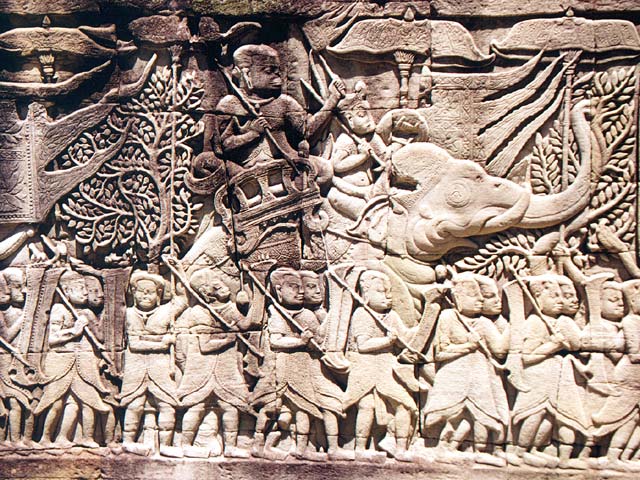The Asiatic Elephant (Elephas maximus), taken, tamed, and trained for civil and military purposes in India and Indochina since antiquity, was once widespread in China, and occasionally employed in battle there. Archeological and literary remains attest to its presence in the valley of the Yellow River in Shang times, but none seem to have survived in the dominions of the kings of Chou. Indeed tradition credited the heroic founders of that dynasty with driving these behemoths from the realm of the Sons of Heaven. During the Han dynasty they were regarded as characteristic animals of Southern Yiieh, that is, of modern Lingnan.

Nonetheless many individual beasts and sometimes even herds are reported from central as well as southern China during the first ten centuries of the Christian era. Groups of elephants were seen in Honan and Hupeh in the fifth century, while large herds still roamed the forests of northern Kwangtung. In the sixth century, several hundreds ravaged the crops in Huai-nan, a small group appeared at Chien-k’ang, and, astonished by the appearance of a solitary straggler in central Honan, the Toba overlords declared a new era, named “Primal Elephant”. Elephants were still abundant in the mountainous parts of Kwangtung in the ninth century, and we are not surprised to read of herds in coastal Lingnan in the tenth.





Nonetheless many individual beasts and sometimes even herds are reported from central as well as southern China during the first ten centuries of the Christian era. Groups of elephants were seen in Honan and Hupeh in the fifth century, while large herds still roamed the forests of northern Kwangtung. In the sixth century, several hundreds ravaged the crops in Huai-nan, a small group appeared at Chien-k’ang, and, astonished by the appearance of a solitary straggler in central Honan, the Toba overlords declared a new era, named “Primal Elephant”. Elephants were still abundant in the mountainous parts of Kwangtung in the ninth century, and we are not surprised to read of herds in coastal Lingnan in the tenth.




